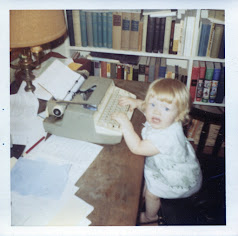 |
| Final resting place of Lawrence N Dean Groesbeek Canadian War Cemetery Nijmegen, Holland |
At that time, I didn't have a full understanding of what this loss meant to my grandmother, but family research has helped me see as much of the full picture as possible. Not only was he her baby brother, but she was, in a way, his second mother after the death of their own mother when Grandma was 12 and Uncle Lawrence not quite 2.
 |
| Lawrence Nimmo Dean March 22, 1914 - April 2, 1945 |
A few years ago I saw for the first time a letter from my grandfather's baby brother, William John White "Pin" Smith, to my grandmother written shortly after he learned of Lawrence's death (transcribed at the end of the post). It is a beautiful letter, full of faith and simple words of comfort.
 |
| "I trust you will have some consolation in the knowledge that his death like that of many others, is for the salvation of millions." |
I wondered at the time about the date on the letter. Uncle Pin was overseas also during the war, along with my grandfather, and two of their nephews. Wasn't ten days a bit quick for him to get the news? The War Department (or its Canadian equivalent), I thought, would have notified only my Uncle Kenneth, who was listed as next of kin. He called my grandmother who would have written my grandfather, and perhaps Aunt Emeline would have written Uncle Pin. I thought that this would have been a longer process than ten days, but you never know. I had not remembered Uncle Pin mentioning that he was notified, not by my grandfather, but by the War Records Office. A discovery last year explains all of this.
That is when I first saw Uncle Lawrence's service file, scanned by Library and Archives Canada and available on Ancestry. Attached by yellowing tape to his Attestation Paper was a note that listed all of the members of the Smith family serving overseas with their ranks and unit information and requesting that they all be notified "in case of casualty". It was a breathtaking moment for me and very moving. It illustrated my grandfather's love for my grandmother and his concern for her while he would be so far away and also in danger.
I wondered almost right away why all four of the Smiths serving overseas were listed to be notified, then just the other day it hit me. In all likelihood, it was because my grandfather realized that he, his brother or nephews could also be killed, hurt, or taken prisoner at any time. He wanted to make sure at least one of them would get the notification. All four Smiths, however, did make it home. Only Uncle Lawrence was never to leave Europe.
 |
| Plaque at Minton United Church, North Hatley, Quebec. |
-------------------
Dearest Marj:I received official notification from Army Records of Lawrence's being killed in action, only yesterday, and I cannot tell you just how sorry I was to read the letter. Please accept my sincere sympathy. Time alone can heal the wound of sorrow you must feel. I trust you will have some consolation in the knowledge that his death like that of so many others, is for the salvation of millions.
Shortly after receiving this letter, Emmy's nephew Ronald, walked in my office, looking remarkably well, if somewhat weak. This, too, was a bit of a shock to me, as I had just received a letter from Canada saying he had been severely wounded for the second time, and that he was not expected to recover. Apparently penicillin & God had worked a miracle, and although he's now short of some important internal parts, he should live to a reasonable age. He'll be returning home before very long.
2
Two fine boys. I couldn't help but thinking of the oft quoted "One shall be taken, and the other.....". I guess faith in God, and the knowledge that Christ, too, gave his life that others might live, can do more to calm the troubled heart than anything.
3
I hear from George most regularly, and he seems to be getting along very well. He asked me to forward a gift he got for you, which I shall do early next week, as I will have a suitable box and wrappings by then. Please extend my condolences to your family. A kiss to Janet for her last card, and love, Pin.
































































